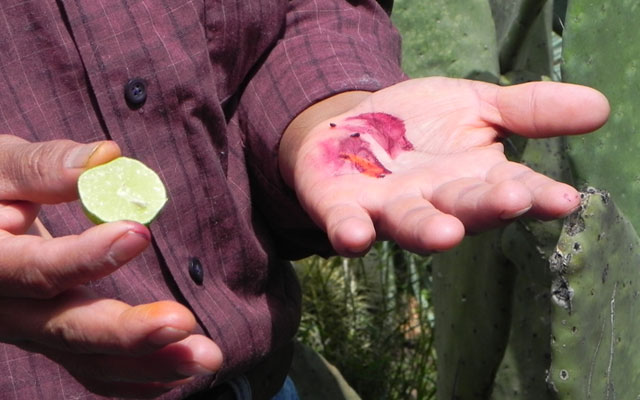For a full week participants from Mexico and the U.S. learned the basics of organic dyeing at my outdoor workshop at el Charco Botanical Garden and Preserve in San Miguel de Allende. The location was gorgeous and spacious, and the staff at el Charco helped with every aspect of the workshop.
http://elcharco.org.mx/Ingles/boletin/boletinAugust.html#3
The first days we studied how to prepare the wool for dyeing and making dye baths with materials from local trees, flowers, husks of nuts, and ground seeds. We obtained skeins of yellows, browns and greens from these dyes, and then we experimented with other types of cloth and silks.
Then the students learned how to dye with the bug, cochineal, which produces many shades of brilliant red, maroon, pink, and purple and if mixed will also produce many shades of orange. The students took turns grinding the cochineal in the “molcajete” –an ancient kind of mortar and pestle-and then dyeing the wool.
For the final days of the workshop we set up an indigo vat and began dyeing with indigo! We obtained gorgeous shades of emerald green that, before our eyes, changed to blue when exposed to oxygen. Then the students used some of our yellow yarn and obtained beautiful greens! One student, a renaissance artist, tied up his dyed yellow fabric before submerging it in the indigo vat and obtained a beautifully mottled green fabric.
Thanks to el Charco for designing the diplomas which the students received on Friday afternoon.
I am looking forward to teaching the next workshop at el Charco in February 2013. I plan to do three weekends of organic dyes with a focus on indigo, which is the most time consuming of all the natural dyeing processes. But for now I am heading back to my Zapotec village, Teotitlan del Valle, in Oaxaca to meet with a group of tourists in my home to show them the basics of dyeing and weaving. Then we will celebrate the Day of the Dead-“Dia de los Muertos” !







